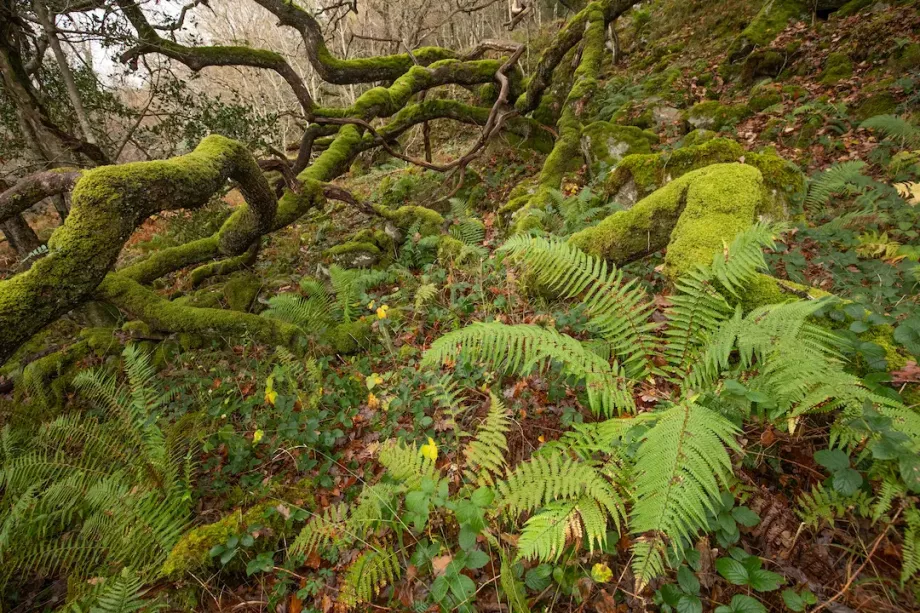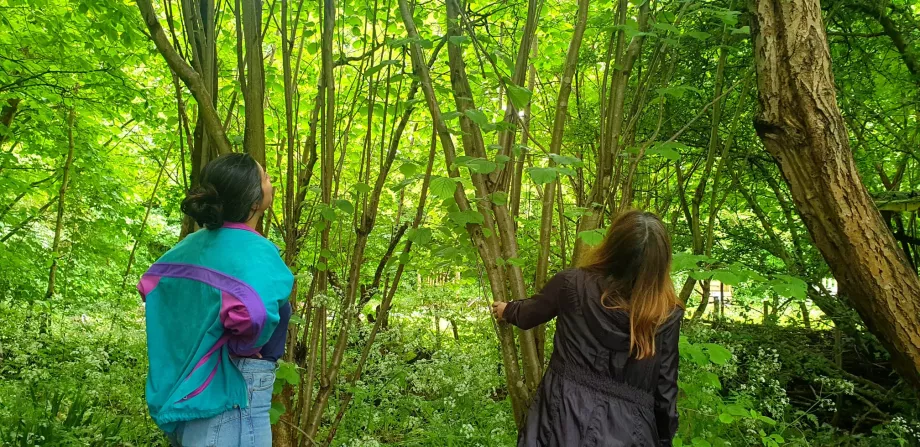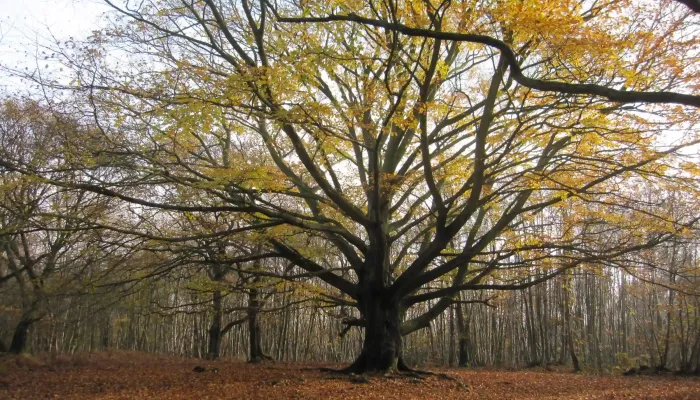
Coed Crafnant rainforest © Ben Porter
Countless species depend upon woodlands. Thousands are supported by oak trees alone. A 2019 report by the UK Centre for Ecology and Hydrology showed that oak trees provide vital food and shelter for at least 2,300 species, and that the very survival of 326 species depends upon them.
Ancient woodlands are the most complex terrestrial habitat we have in the UK, with every part of them providing for a myriad of life. They support more threatened species than any other habitat we haveiii and lack of woodland management – which is vital to keep our woodlands diverse and healthy - is one of the eight biggest drivers of species decline. So, it’s clear that, if we were to lose our woodlands, we’d have to say goodbye to a whole host of plants and animals.
So many are already threatened, including:
- the hazel dormouse, which is of critical conservation concern
- the elusive barbastelle bat
- the lesser spotted woodpecker – one of our scarcest birds
- the incredibly rare violet click beetle, which depends on decaying wood and is found at just three sites in the UK.
Without our woodlands, these species and many more would be lost, forever.
Oxygen levels aside, our air would be much more dangerous
Atmospheric pollution can have harmful impacts on human health. 8.1million deaths worldwide were attributed to air pollution in 2021, and research suggests that particulate matter (PM) pollution – made up of small particles of dust, soot, chemical compounds, acids and other materials which are emitted from car exhausts and factories – causes the premature death of 48,625 adults in the UK each year.
But trees can help to protect us from this.
As well as carbon dioxide, trees can absorb other pollutants, including nitrogen dioxide and sulphur dioxide. The fine hairs on the leaves of trees and plants, and their waxy surfaces, can also help to trap particulate matter. A recent study carried out by Lancaster University found that some of our native trees – silver birch, yew and elder – are the best at catching these harmful substances.v
Without our trees and woodlands, we’d be much more exposed to these deadly pollutants. And we could face a whole raft of other terrifying impacts, from droughts and flooding, to increased temperatures and wildfires.
Our overall health and wellbeing would also suffer
Spending time in woodlands, and nature generally, brings a huge number of benefits to our physical and mental health and wellbeing. Regular time spent in nature is linked to a reduced risk of developing certain diseases, including type two diabetes; it can also reduce anxiety, depression and loneliness, whilst improving happiness and resilience.
The 2021 report, ‘Valuing the Mental Health Benefits of Woodlands’, estimated the annual value of mental health benefits associated with visits to woodlands in the UK, at £185 million.

©️ Nikki Cresswell
We have seen first-hand these results from the delivery of our own Wilder Wellbeing programmes – with individuals who join our 6-week programmes, reporting reduced feelings of loneliness and isolation, and having the chance to form lasting connections with others in the wonderful outdoors.
There is nothing quite like a walk in the woods and, if we lost them, there never would be again.
Our cultural lives would be poorer
Trees are at the heart of so much that enriches our lives. They play a key role in many different faiths, and in the cultural traditions of people around the world.
They are also a physical link to our past. To be classified as ‘ancient’ in England, woodland areas must have existed continuously since 1600 – when the first King Charles was on the throne!
Woodlands provide an enduring connection to centuries of history, mythology, and folklore. Trees and woodlands have served as a muse for countless great minds, and inspired the creations of some of our most-loved writers and artists – like A.A Milne’s Hundred Acre Wood, Robert Frost’s ‘lovely, dark and deep’ woods, and the Ents in Tolkien’s The Lord of the Rings. And so many of us draw inspiration from them on a daily basis.
The ultimate Halloween nightmare
There are countless ways in which our lives would be impacted by the loss of our woodlands. But none of them are good. There may be no agreed-upon scientific answer to the question – what would life be like without woodlands?, but it’s very clear that it would be much less magical, less interesting, less peaceful and, ultimately, much less full of….well, life.
You can help Save our Woodlands
In Kent, we are fortunate to be one of the most wooded counties in the South East, but our woodlands, like those across the UK, are facing a growing number of threats. By making a donation to the Save our Woodlands appeal, or helping to spread the word, you will be supporting our vital work to restore biodiversity within our woodlands and to advocate for the protection of those at risk across the county.

